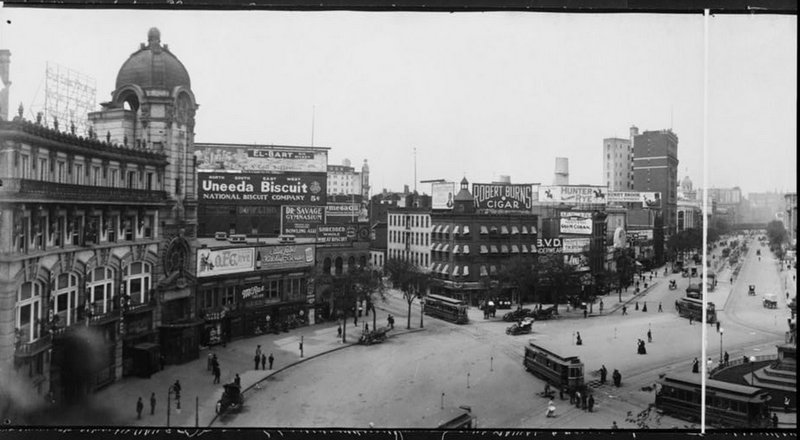 Columbus Circle c. 1907. Photo from Library of Congress.
Columbus Circle c. 1907. Photo from Library of Congress.
Ever since Columbus Circle was redesigned in conjunction with the Time Warner Center, the area around the traffic island has transformed into a commercial destination. But like much of the city, the area had humble origins: it was once farmland owned by John Somerindyck, which only became accessible to the general public after the 9th Avenue train was built. Even then, though, the virgin lands weren’t ideal for a residential neighborhood. Instead of housing, rows upon rows of warehouses were erected around the 59th Street area.
Things took a turn when, in the 19th century, William Eno designed Columbus Circle as part of Frederick Olmstead’s plans for Central Park with the monument at the center completed separately, in 1892 – 400 years after Columbus’ first landing in the Americas. The monument, a 13-feet tall statue of of the Italian explorer created by sculptor Gaetano Russo, was featured in Tatzu Nishi’s Discovering Columbus last year, an art installation turned the statue into the centerpiece of an intimate living room.
Though the circle was completed in 1905, it’s been redesigned numerous times since its completion. While we’ve all seen modern-day Columbus Circle, we thought we’d share some photos that document the area’s evolution since its completion in the early 1900s.

Panorama of Columbus Circle, 1907. Photo from Library of Congress.

Columbus Circle, 1912. Trolleys used to run on tracks that were built during the late 1800s. Photo from Library of Congress.
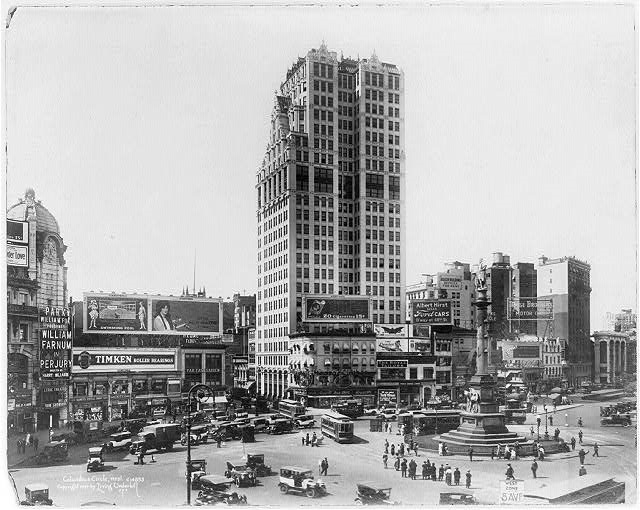
Columbus Circle, 1921. At this point, cars became a bigger presence around the traffic island. The Art Deco Circle Building, featured in the center of the photo, was later demolished to make way for Columbus Circle. 59th Street was eliminated. Photo from Library of Congress.
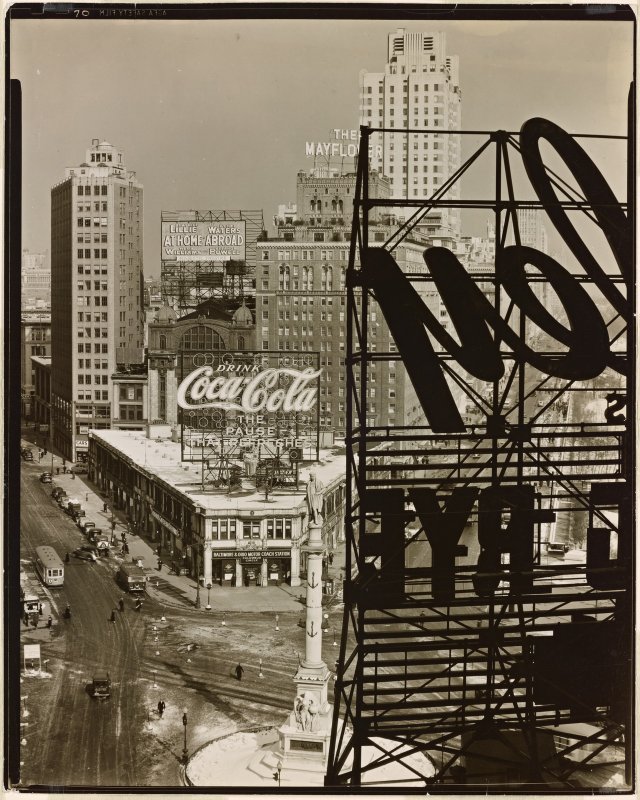 Columbus Circle, 1938. Photo from New York Public Library.
Columbus Circle, 1938. Photo from New York Public Library.
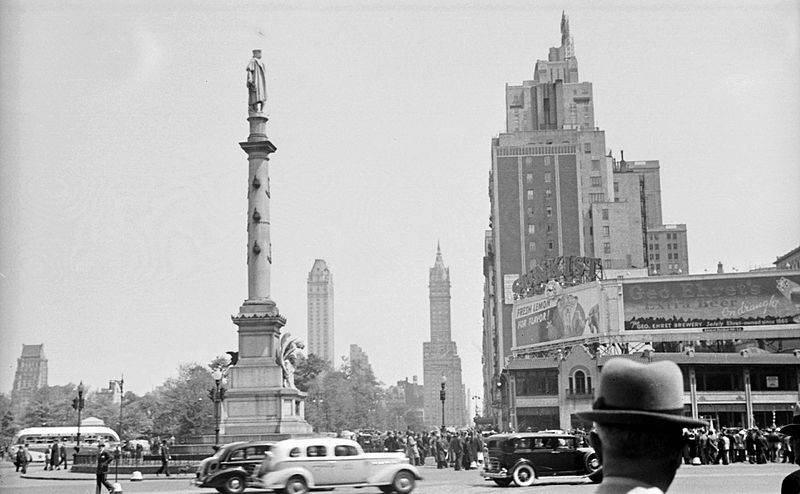 Columbus Circle in 1939. Photo from Wikimedia Commons.
Columbus Circle in 1939. Photo from Wikimedia Commons.
Columbus Circle, 1990s. For a time, Columbus Circle’s traffic pattern was non-circular, but it was later returned to a circular flow after the city commissioned a redesign of the traffic island.
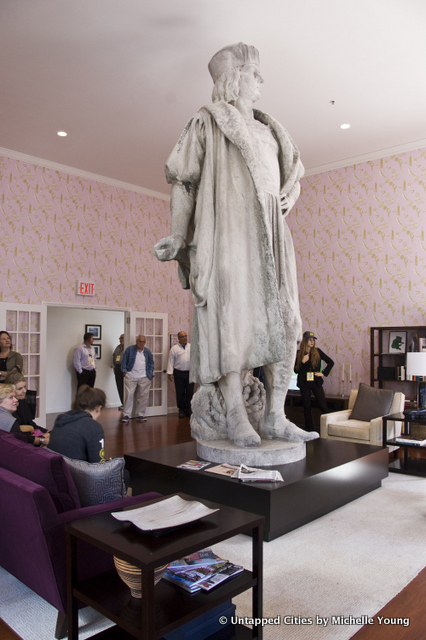 Tatzu Nishi’s Discovering Columbus exhibit in 2012
Tatzu Nishi’s Discovering Columbus exhibit in 2012
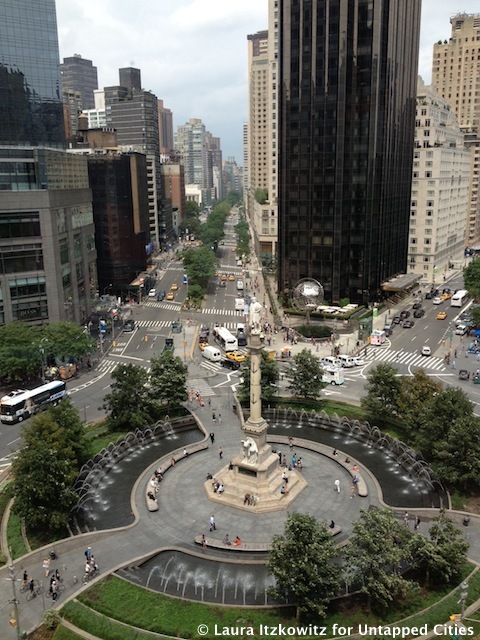 View of Columbus Circle today from the Robert restaurant at the MAD Museum, with an aerial view of the redesigned public plaza
View of Columbus Circle today from the Robert restaurant at the MAD Museum, with an aerial view of the redesigned public plaza
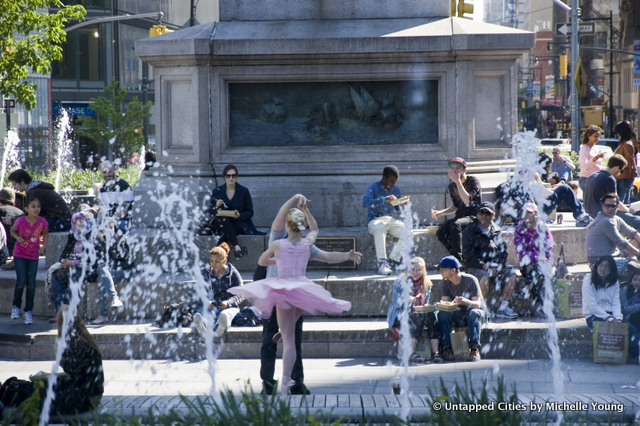 The Charles Fazzino The Ride goes past Columbus Circle, featuring ballet dancers amidst residents and visitors taking time in Columbus Circle
The Charles Fazzino The Ride goes past Columbus Circle, featuring ballet dancers amidst residents and visitors taking time in Columbus Circle
See Central Park over the years and read more from our Vintage Photography column.





